Last week two of my brave family members from the US visited some of EcoMinga’s reserves with me. My sister Lorie Koessl and my brother Brad’s 17-year-old daughter Saige Jost are both nature-lovers and hikers, so they were perfect companions. Here are some of the things we saw in and around our reserves in six days of hiking.
Mammal encounters are rare here. Usually we only see them in our camera trap videos, or we find their tracks or scat. But on our visit to EcoMinga’s Rio Anzu Reserve in the Amazonian foothills, we were sitting on rocks along the river when we heard a strange call, not quite bird-like….a few seconds later two tayra (Eira barbara) appeared on the opposite bank, jumping from rock to rock. These are relatives of the wolverine and mink, fairly large muscular omnivores that are capable of killing large birds and mid-sized mammals. This was one of the best views I have ever had of them. They were not concerned by our presence. My sister had borrowed one of my cameras for the day and she managed to snap a few pictures of them as they went along.
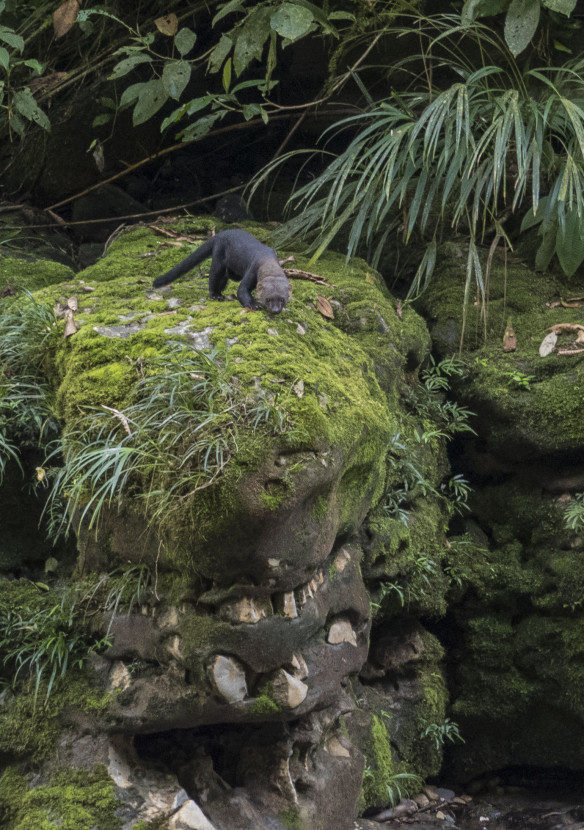
Tayra (Eira barbara) on the limestone along the shore of the Rio Anzu. Click on image to enlarge. Photo: Lorie Koessl.
Of course there were many invertebrates in the Rio Anzu Reserve. Here is a colorful grasshopper photographed by Saige on her cell phone:
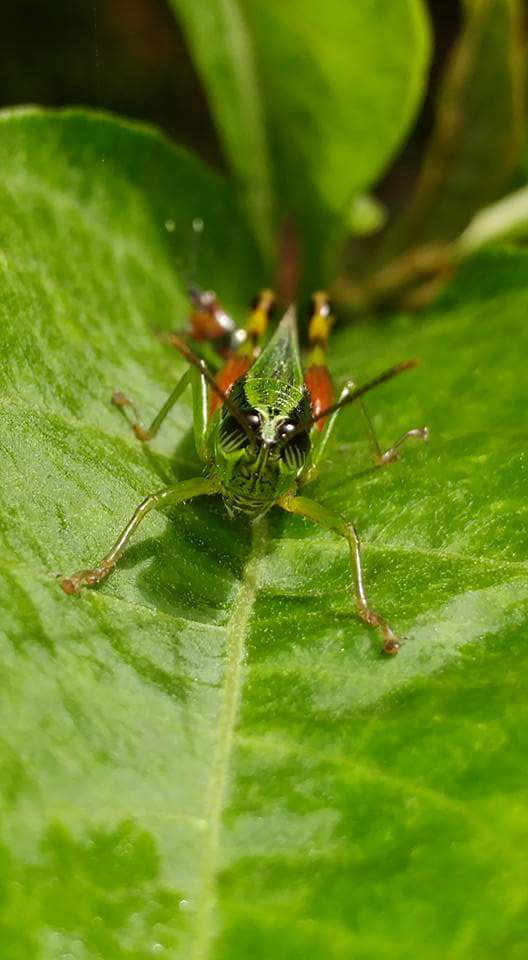
Grasshopper. Photo: Saige Jost.
In our Rio Zunac Reserve, we encountered a couple of rodents. One especially cute individual had made a nest in an abandoned cabin that used to belong to our park ranger Fausto Recalde before we bought the land from him:
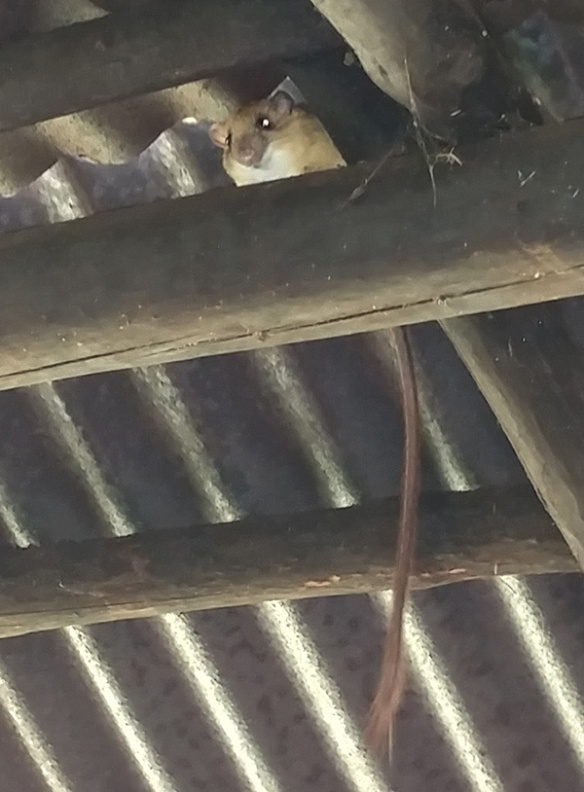
Albuja’s Climbing Rat (Rhipidomys albujai). Photo: Lorie Koessl.
Incredibly, this turned out to be a recently discovered new species of mammal, Albuja’s Climbing Rat (Rhipidomys albujai), that was only described a few months before our visit, by our friend Jorge Brito and coauthors:
http://www.tandfonline.com/doi/full/10.1080/23766808.2017.1292755
From the Climbing Rat’s cabin Lorie spotted our magnificent pair of Black-and-chestnut Eagles, though they were too far away to photograph. This cabin is just below their former nesting site, but it seems they are not currently nesting there. Perhaps they are still caring for last year’s fledgling.
On a day hike to our Cerro Candelaria and Naturetrek Reserves, we were able to spend time watching the well-named Torrent Duck (Merganetta armata) feeding in a raging whitewater stream that would have quickly killed almost any other bird or mammal.
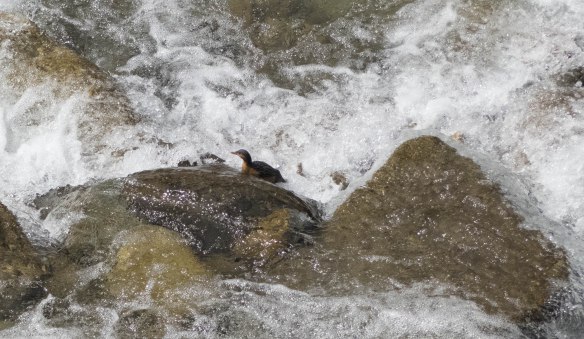
Female Torrent Duck resting on a rock in the rapids. Photo: Lorie Koessl.
This is a very distinctive duck appears not to be closely related to the familiar north temperate duck species, but its position in the tree of life is still uncertain.
On the day of the Torrent Duck sighting, our ranger Fausto Recalde brought his 5-year-old daughter Amy along. She was an excellent guide, who found several interesting things that we had not noticed. She was also very playful; she did this controlled falling trick about 20 times in succession, laughing all the while:
Amy Recalde playing.
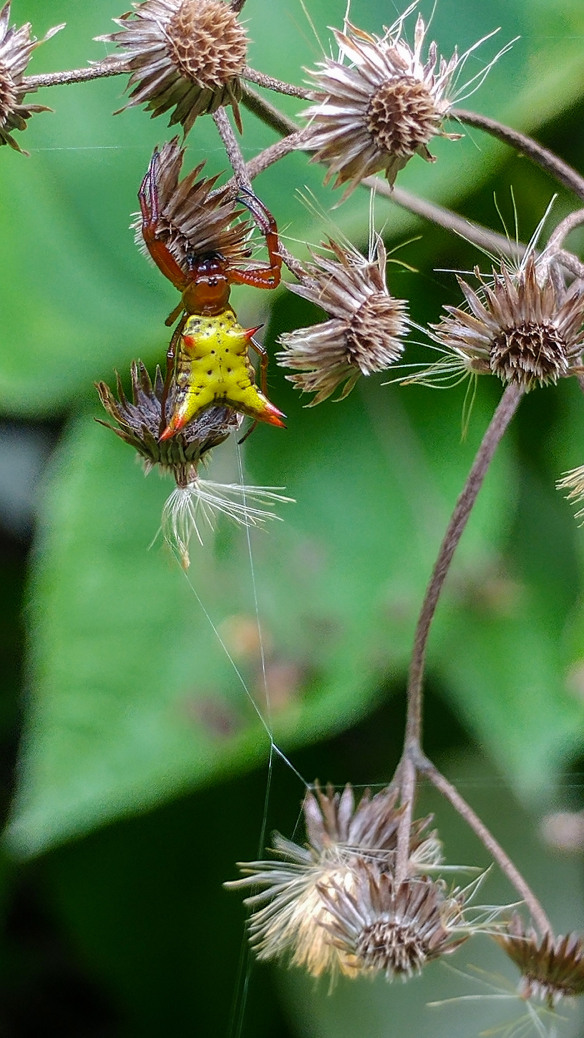
A spider (genus Gasteracantha?) along the river of the Torrent Duck. Photo: Lorie Koessl.
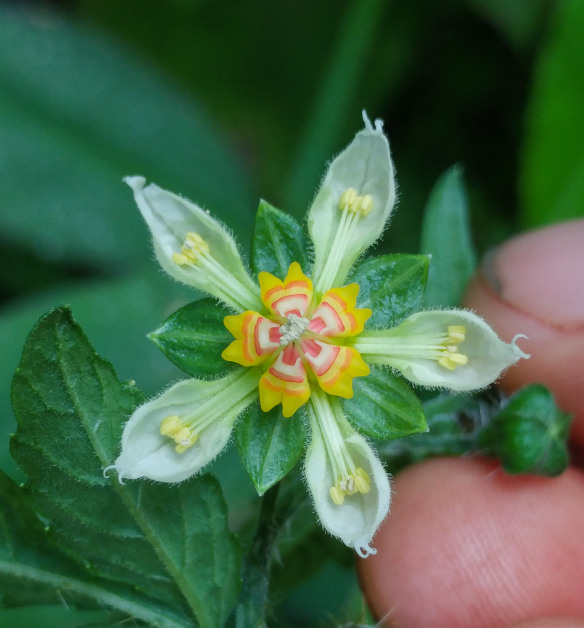
A plant with irritating spines, Nasa (Loasaceae), along the river of the Torrent Duck.
Night hikes are always special in the tropics. We took a night hike during our three-day stay in EcoMinga’s Rio Zunac Reserve, and in the space of less than a half hour we saw a non-stop show of fascinating insects, arachnids, frogs, and sleeping lizards:
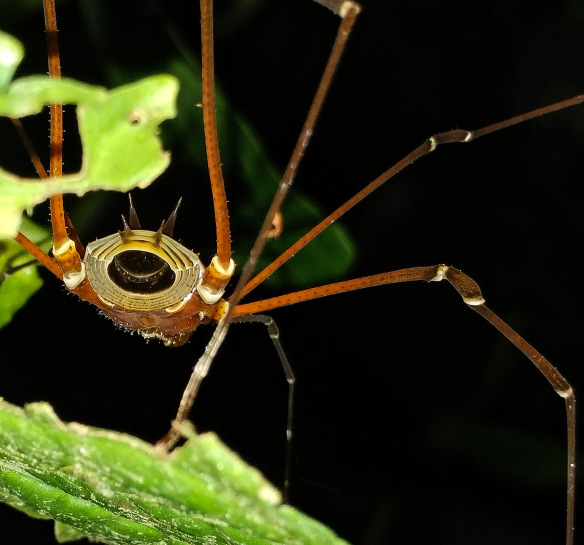
A tropical harvestman (“daddy longlegs” to US readers). Click image to enlarge. Photo: Lorie Koessl.
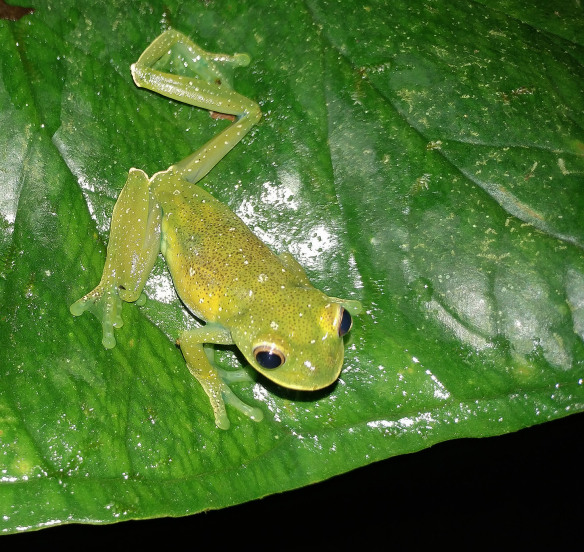
Frog at night. Photo: Lorie Koessl.
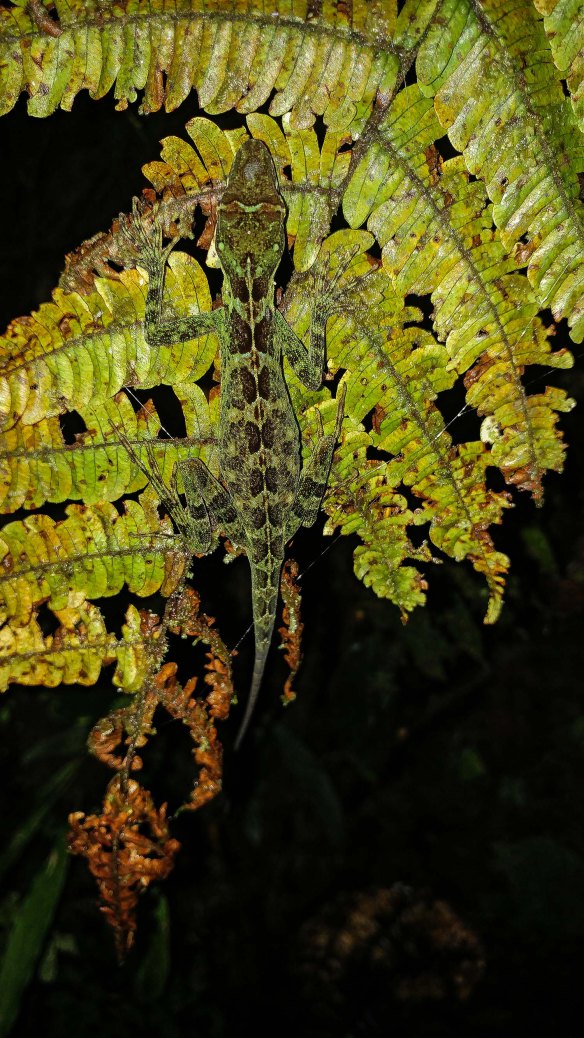
Sleeping lizard. Click image to enlarge. Photo: Lorie Koessl.
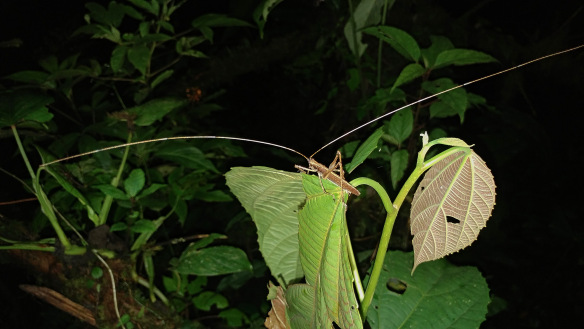
Exuberant antennae. Photo: Lorie Koessl.
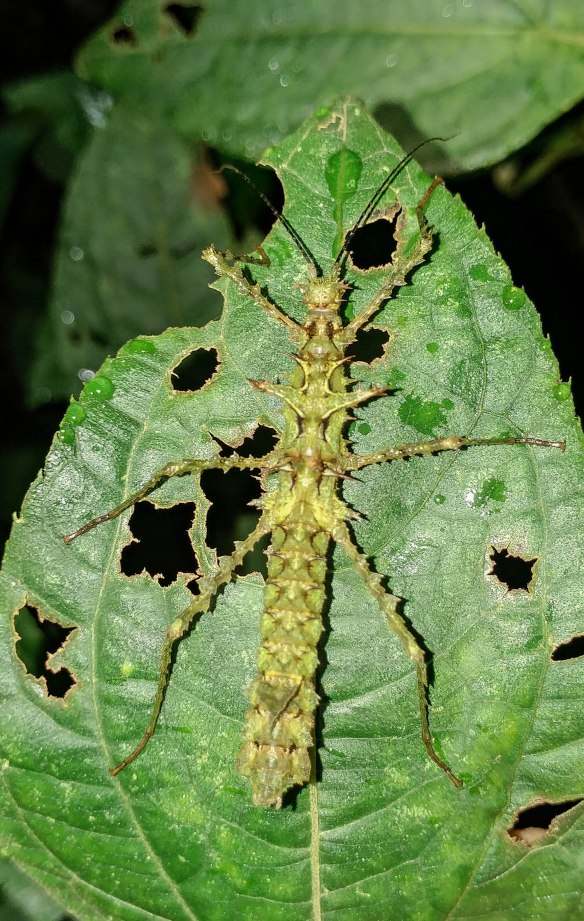
One of many variations on this theme seen during our night walk. Parobrimus sp. (could be Parobrimus horridus) according to a comment below by Yannick. Photo: Lorie Koessl.
There were neat invertebrates during the day too along the Rio Zunac. On our return home we saw these:
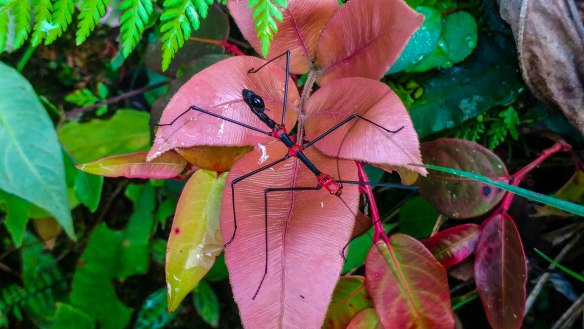
Walking stick. Male Oreophoetes sp (maybe a new species) according to Yannick in the comments below. Photo: Lorie Koessl.
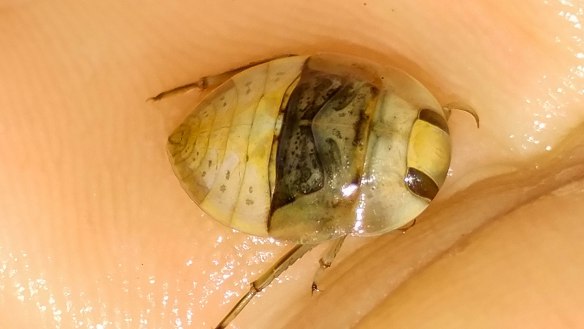
A water bug. Photo: Lorie Koessl.
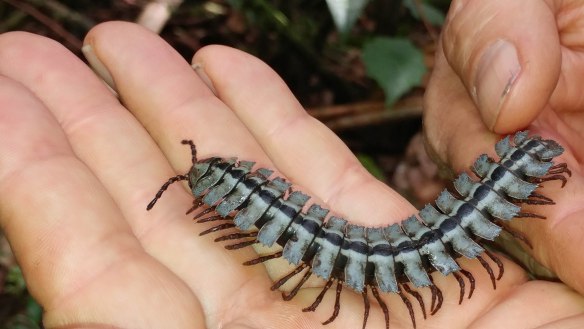
Saige plays with a millipede. Photo: Lorie Koessl.
Some of the invertrebates were less welcome. There was an eruption of biting horseflies in the Zunac Reserve that week, and here are some that we killed while they bit us during a quick dinner:
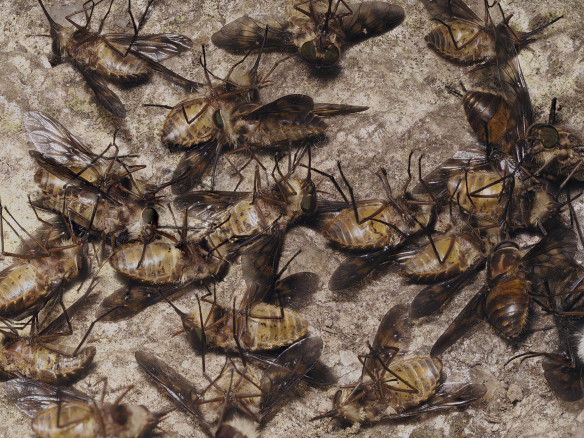
Dead horseflies killed as they tried to bite us during dinner. This is about a quarter of the total number we killed during that dinner; most were completely squished….Photo: Lou Jost.
On the same rock wall where we piled the dead horseflies, there was a fascinating construction of waxy tubes made by large black bees:
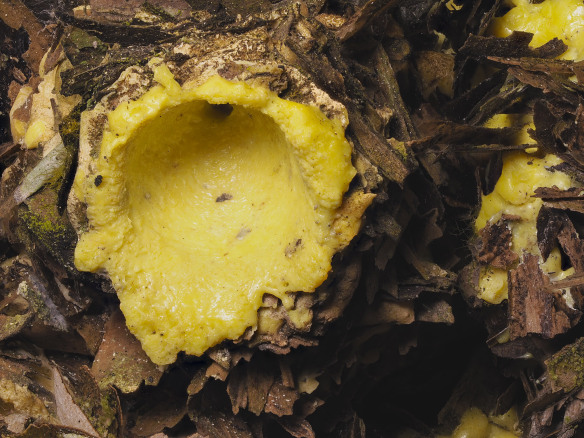
This is an open cell under construction. Click image to enlarge. Photo: Lou Jost/EcoMinga.
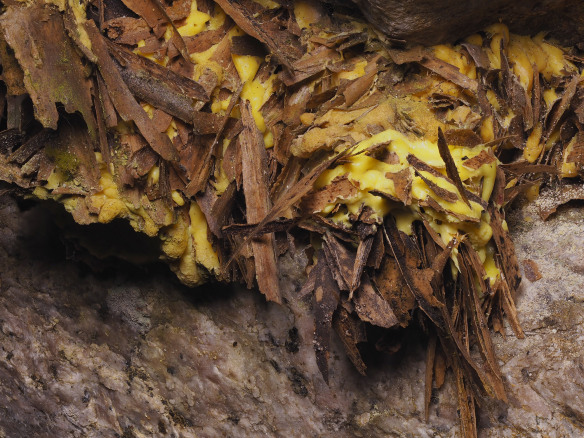
This is a sealed cell with larva inside. Photo: Lou Jost/EcoMinga.
Lorie and Saige, thanks for your visit! It was fun to show you EcoMinga’s reserves!
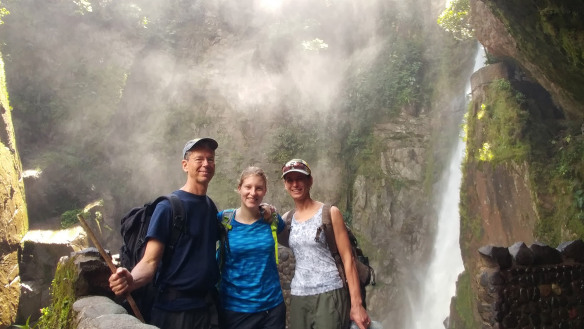
Myself, Saige, and Lorie at the Pailon Del Diablo waterfall just below EcoMinga’s Naturetrek Reserve. Photo: unknown stranger.

Approach to Quito’s airport. Photo: Saige Jost.
Lou Jost, Fundacion EcoMinga.
Share this:




